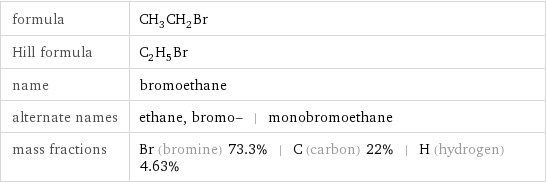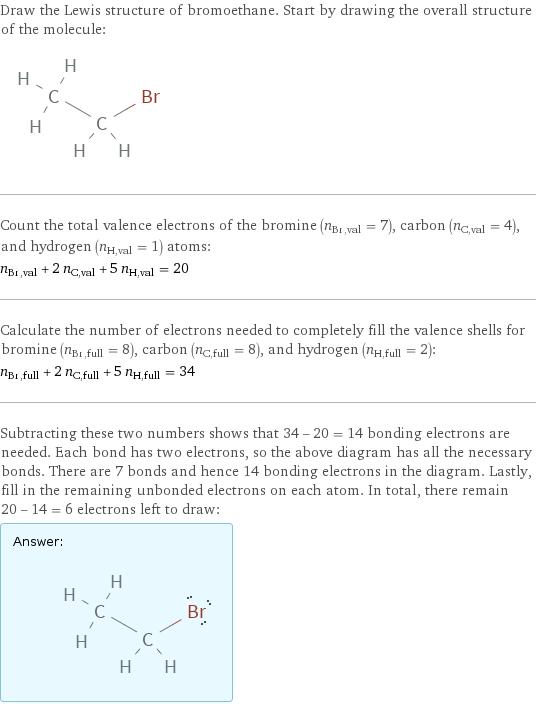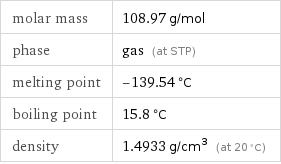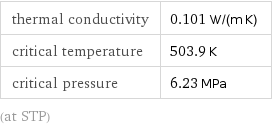Input interpretation

bromoethane
Chemical names and formulas

formula | CH_3CH_2Br Hill formula | C_2H_5Br name | bromoethane alternate names | ethane, bromo- | monobromoethane mass fractions | Br (bromine) 73.3% | C (carbon) 22% | H (hydrogen) 4.63%
Lewis structure

Draw the Lewis structure of bromoethane. Start by drawing the overall structure of the molecule: Count the total valence electrons of the bromine (n_Br, val = 7), carbon (n_C, val = 4), and hydrogen (n_H, val = 1) atoms: n_Br, val + 2 n_C, val + 5 n_H, val = 20 Calculate the number of electrons needed to completely fill the valence shells for bromine (n_Br, full = 8), carbon (n_C, full = 8), and hydrogen (n_H, full = 2): n_Br, full + 2 n_C, full + 5 n_H, full = 34 Subtracting these two numbers shows that 34 - 20 = 14 bonding electrons are needed. Each bond has two electrons, so the above diagram has all the necessary bonds. There are 7 bonds and hence 14 bonding electrons in the diagram. Lastly, fill in the remaining unbonded electrons on each atom. In total, there remain 20 - 14 = 6 electrons left to draw: Answer: | |
3D structure

3D structure
Basic properties

molar mass | 108.97 g/mol phase | gas (at STP) melting point | -139.54 °C boiling point | 15.8 °C density | 1.4933 g/cm^3 (at 20 °C)
Units

Gas properties (at STP)

density | 1.4933 g/cm^3 (at 20 °C) molar volume | 72.97 cm^3/mol dynamic viscosity | 3.74×10^-4 Pa s (at 25 °C)
Units

Thermodynamic properties

thermal conductivity | 0.101 W/(m K) critical temperature | 503.9 K critical pressure | 6.23 MPa (at STP)
Chemical identifiers

CAS number | 74-96-4 PubChem CID number | 6332 SMILES identifier | CCBr InChI identifier | InChI=1S/C2H5Br/c1-2-3/h2H2, 1H3